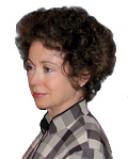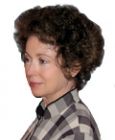Identity
The Psychology of Double Names
What are the repercussions of a double given name?
Posted June 10, 2014 Reviewed by Jessica Schrader
Double first names developed 1) because of the need to create more names for an expanding population; 2) because of the desire to protect a child by giving him a saint’s name in order to secure the protection of the saint; 3) in order to create class distinctions for the elite—with as many as 10 given names. The usage was copied by the lower classes, however, who began to use double first names. And finally 4) the institution of godparents also helped to foster multiple given names with children named for godparents as well as relatives.
The tradition of double first names was rare in England until the seventeenth century when Charles James Stuart (Charles I) was crowned king of England. Charles James Stuart was Catholic, and Catholics had, and still have, a double naming tradition. Double names developed for social and religious reasons. The American double name tradition derives from the Scots-Irish-English, French, and German double naming traditions.
The term “double name” suggests two separate entities. Double names were not originally hyphenated. French usage now prefers a hyphen to connect double given names. Hyphens were never used, however, for three or more given names. Hyphenated given names are becoming more popular in England. The use of the hyphen clarifies that the two names are to be considered as a whole—both names are necessary—which raises interesting questions about names and identity. What are the repercussions of a double given name? Women who wrote about their double names provide interesting psychological insights into questions about names and identity.
Linda Sue described the Southern lit of her double name, which she shortened to Sue. Many Southern women’s names have three beats and said quickly, scan as anapests, a meter extremely popular in 19th-century lyric poetry when many European immigrants were coming to the U.S. Southerners have a strong double naming tradition which derives from the mass migration of the Scots and Irish into the South, with large concentrations in Appalachia, as well as from French, Spanish, English catholic immigrants. Sue had no problems as a result of shortening her name until after 9/11 when she arrived at the airport with her driver's license that listed her name as Linda Sue, but all of her other identity papers, checks, charge cards, had only Sue—one given name, not two. This created a problem for the authorities. Was Linda Sue the same person as Sue? Not only could the question be taken literally but also psychologically. What did the elimination of the name Linda represent—simply an effort to avoid stereotypes or something more complicated?
Mary Alice, named for two aunts, shortened her name to Mary when she entered middle school because she felt Mary Alice sounded childish. Many women discussed changing their name in some way to mark an important stage of development in their lives: e.g., in transitioning to high school, to college, or to the workplace.
Mary Ida, named for two grandmothers, was regularly erroneously addressed as either Mary Anne, a more common double name, or simply as Mary. Facing the confusion and the shortening, Mary Ida decided her double name was too confusing and dropped her second name to become known simply as Mary.
One mother, whose daughter has a double name that her schoolmates refuse to use, asked, “Why is it that kids shorten names? They even simply resort to initials.” Is this a sign of our harried Twitter Age, which seeks the shortest response? Or do double names trigger an unconscious malaise about identity? What is your reaction when you hear a double name? One common reaction is that one name is enough and two names are pretentious or démodé.
Mary Anne talked about problems she had in college when her name was on computer rosters as Mary A., so that when her name was called as “Mary” she did not recognize the name as hers. She solved the problem cleverly by changing the spelling to Maryanne. Once again, everything was fine unil after 9/11 when the change caused problems for obtaining a new driver’s license when she moved to another state. Another Mary Anne also faced complications. Her schoolmates and teachers shortened her name to Mary, which she hated because of its associations with the Virgin Mary in her Catholic school. Later, she legally changed her name to MaryAnne, making the two names one, but preserving their separate identity by capitalizing Anne. Both Maryanne and MaryAnne explained that their double name was for the Virgin Mary and her mother Anne. Both women felt they needed both names—that loss of the second name represented an unacceptable loss for their sense of identity, as opposed to Mary Alice (named for two aunts) and Mary Ida (named for two grandmothers), who both shortened their names to Mary. It’s interesting that the family names were easier to drop than the religious names perhaps because the two family names represented two distinct people with two distinct personalities whereas the Virgin Mary and Ann are idealized, abstractions, and Mary could not exist without her mother Anne.
Another essayist Ann-Louise explained that she was named for two deceased aunts. As a child, she remembers being disappointed by her parents answers about her namesakes, so she fantasized about what they were like, creating her own storybook characters, favoring the aunt whose name she like best—Ann. As a child, she even worried that because she had two names she would need to do twice as much as kids with only one name. This fear was heightened when she asked her mother about having a nickname only to have her mother respond angrily that she had to keep both names in order not to show favor to one side of the family over the other. The issue was finally solved when she went to college and introduced herself as Ann, which became her new identity.
Betty Lou was named after deceased female and male relatives. As a chid, she wondered if, somehow, she was supposed to be both genders. She has never felt really at peace with her name’s bisexual identity. Bisexual names are not unusual in the French catholic tradition—for men (e.g., Jean-Marie) and women (e.g., Marie-Louise, Marie-Josephine). Bisexual double names are not unusual in the South because of the French influence and as a result of the Civil War; baby girls were given male first names and family names as given names to remember lost loved ones as well as deceased lineages.
With the exception of Betty Lou, all of the essayists who wrote about their double names evolved into a single given name either by dropping one name or by fusing the two names into one. They provided different reasons for the name changes—avoiding Southern stereotypes, confusion about the name, a childish sounding name, computer ID problems. However, Ann-Louise, who became Ann, may have discovered the psychological basis for the downsizing to one name—the need for a single identity. In Betty-Lou’s case, this fusion was not possible because her names represent the masculine and the feminine—dropping one causes an unacceptable loss.
Women who wrote about having two given names faced more social complications concerning their sense of name identity than women with a single given name. Women with double names also faced overt questions concerning a unified sense of identity in ways that women with a single name do not.




